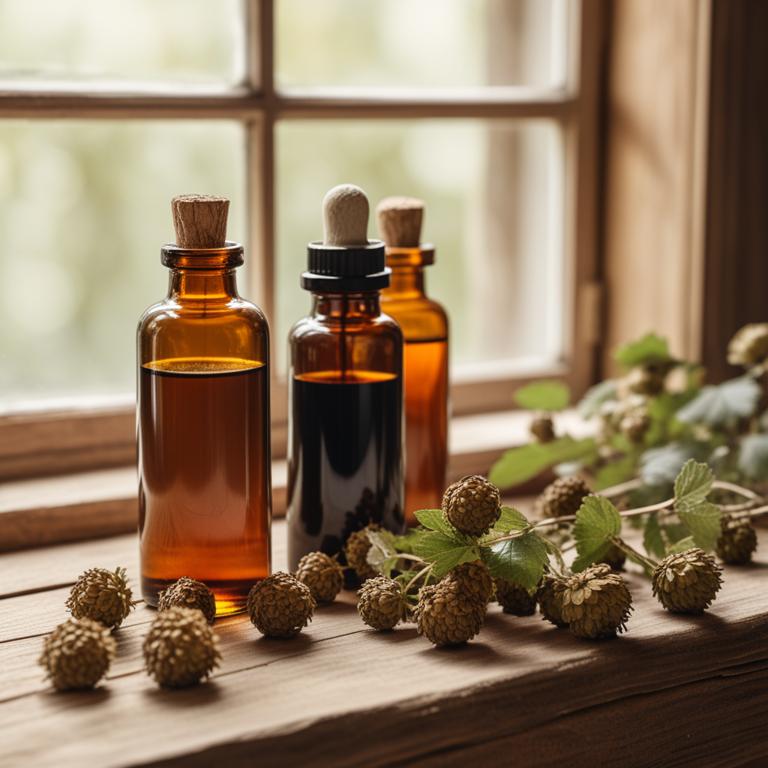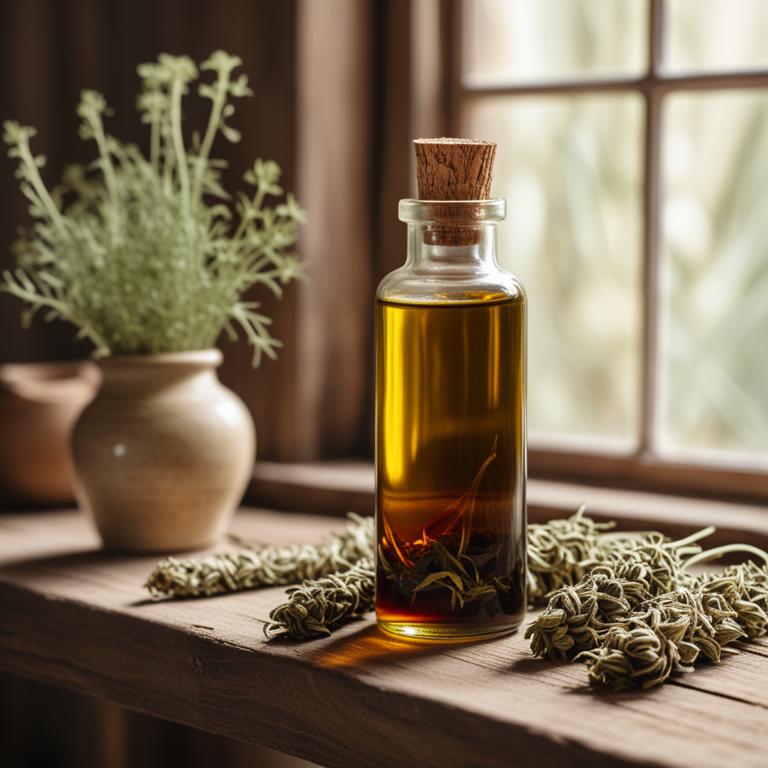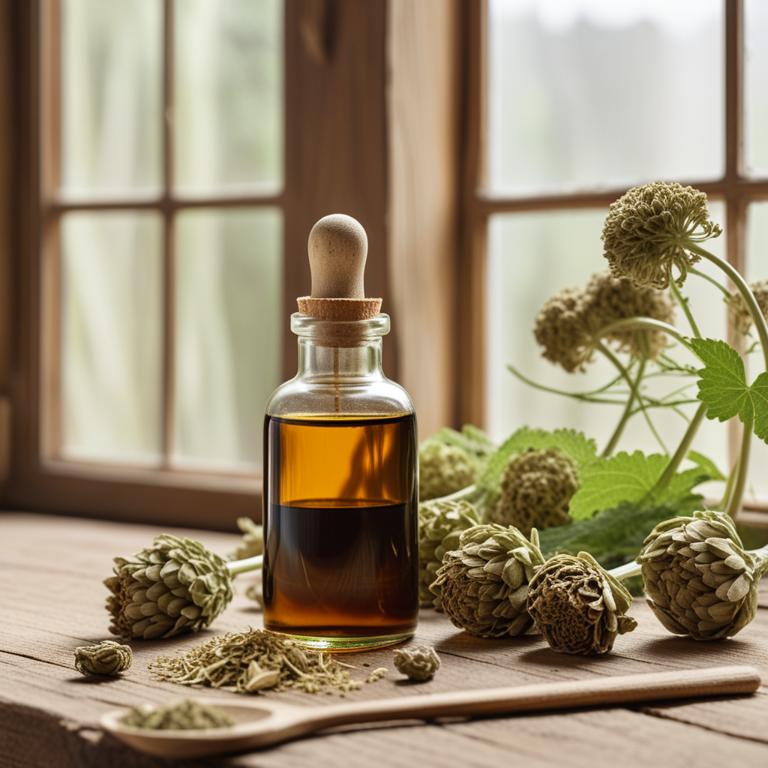9 Best Herbal Tinctures For Congestive Heart Failure

Herbal tinctures for congestive heart failure are liquid extracts of herbs that have been traditionally used to improve heart function, reduce symptoms, and enhance overall cardiovascular health.
These tinctures often combine various herbs that have been found to have antioxidant, anti-inflammatory, and vasodilatory properties, making them beneficial for treating congestive heart failure.
Some examples of herbal tinctures used to treat congestive heart failure include Hawthorn (Crataegus monogyna), which improves heart function and reduces blood pressure; Ginkgo biloba, which improves circulation and reduces inflammation; L-Carnitine, which improves energy production in the heart; and Coleus forskohlii, which improves heart function and reduces blood pressure.
The benefits of using herbal tinctures for congestive heart failure include improved symptoms, enhanced quality of life, and a reduction in the need for pharmaceutical medications.
According to "Fortschritte der Medizin", tinctures for congestive heart failure may be effective and safe therapeutic alternatives, as hawthorn (crataegus) has shown benefits concerning both objective signs and subjective symptoms of congestive heart failure stage NYHA-II, with no adverse drug reactions reported.
Below there's a list of the 9 best herbal tinctures for congestive heart failure.
- 1. Crataegus monogyna tinctures
- 2. Rauvolfia serpentina tinctures
- 3. Digitalis purpurea tinctures
- 4. Panax quinquefolius tinctures
- 5. Astragalus membranaceus tinctures
- 6. Angelica sinensis tinctures
- 7. Zingiber officinale tinctures
- 8. Glycyrrhiza glabra tinctures
- 9. Ilex paraguariensis tinctures
Also you may be interested in...
TODAY'S FREE BOUNDLE
Herb Drying Checklist + Herbal Tea Shopping List + Medicinal Herbs Flashcards
Enter you best email address below to receive this bundle (3 product valued $19.95) for FREE + exclusive access to The Aphotecary Letter.
$19.95 -> $0.00
1. Crataegus monogyna tinctures

Crataegus monogyna tinctures have been traditionally used to treat congestive heart failure due to their cardiotonic and vasodilatory properties, which help to improve cardiac function and reduce blood pressure.
The bioactive constituents of this herbal preparation, including flavonoids, phenolic acids, and triterpenoids, have been shown to exhibit antioxidant, anti-inflammatory, and anti-arrhythmic effects, contributing to its therapeutic benefits.
By increasing the contractility of the heart and improving the heart's ability to pump blood, Crataegus monogyna tinctures can help to alleviate symptoms of congestive heart failure, such as fatigue and shortness of breath.
The benefits of using this herbal preparation to treat congestive heart failure include improved quality of life, reduced risk of hospitalization, and potential reduction in the need for medication.
Related Study
According to "Fortschritte der Medizin", Crataegus monogyna tinctures have been found to be effective and safe in treating congestive heart failure, with rigorous clinical trials showing benefits in both objective signs and subjective symptoms of the condition.
2. Rauvolfia serpentina tinctures

Rauvolfia serpentina tinctures have been traditionally used to treat congestive heart failure due to their ability to help lower blood pressure and reduce the workload on the heart.
The bioactive constituents of Rauvolfia serpentina, including alkaloids such as reserpine and ajmaline, help to relax blood vessels and improve cardiac function.
The tincture's cardio-protective properties help to reduce the severity of congestive heart failure symptoms, such as shortness of breath and fatigue, by improving the heart's ability to pump blood efficiently.
The benefits of using Rauvolfia serpentina tinctures to treat congestive heart failure include improved quality of life, reduced risk of heart failure complications, and a decrease in the need for conventional medications.
3. Digitalis purpurea tinctures

Digitalis purpurea tinctures have been used traditionally to treat congestive heart failure by increasing the strength of the heart's contractions and improving its efficiency in pumping blood.
This herbal preparation exhibits cardiotonic and inotropic properties, which help to improve the heart's ability to pump blood and increase the cardiac output.
The bioactive constituents present in Digitalis purpurea tinctures, such as digoxin and digitoxin, play a crucial role in enhancing the heart's contractility and reducing the symptoms of congestive heart failure.
By using Digitalis purpurea tinctures, patients with congestive heart failure may experience improved cardiovascular function, increased energy levels, and a reduced risk of hospitalization due to heart-related complications.
Related Study
According to "Annali italiani di medicina interna : organo ufficiale della Societa italiana di medicina interna", Digitalis purpurea tinctures, in the form of digoxin, lessen symptoms and reduce morbidity associated with congestive heart failure, particularly in patients with more advanced symptoms and ventricular dysfunction.
4. Panax quinquefolius tinctures

Panax quinquefolius tinctures, derived from the American ginseng plant, have been traditionally used to treat congestive heart failure due to their adaptogenic and cardio-protective properties.
The ginsenosides present in these tinctures help to improve cardiovascular function by increasing cardiac output, reducing blood pressure, and enhancing vasodilation, ultimately contributing to the alleviation of heart failure symptoms.
The bioactive constituents, including ginsenosides Rb1 and Rg1, play a crucial role in modulating the renin-angiotensin-aldosterone system, reducing oxidative stress, and enhancing the expression of genes involved in cardiac remodeling, making Panax quinquefolius tinctures a potential adjunctive therapy for congestive heart failure.
Regular use of these tinctures has shown benefits in improving heart function, reducing hospitalization rates, and enhancing overall quality of life for individuals with congestive heart failure.
5. Astragalus membranaceus tinctures

Astragalus membranaceus tinctures have been traditionally used to treat congestive heart failure due to their adaptogenic and cardiovascular-protective properties.
This herbal preparation helps to treat congestive heart failure by improving cardiac function, reducing oxidative stress, and enhancing the heart's ability to pump blood efficiently.
The bioactive constituents of Astragalus membranaceus tinctures, including flavonoids, saponins, and polysaccharides, are responsible for their therapeutic effects, which include improving cardiac contractility, reducing inflammation, and enhancing the body's antioxidant defenses.
The benefits of using Astragalus membranaceus tinctures to treat congestive heart failure include improved quality of life, reduced symptoms, and enhanced cardiac function, making it a promising complementary therapy for this condition.
Related Study
According to "Alternative medicine review : a journal of clinical therapeutic", Astragalus membranaceus tinctures have been found to have therapeutic benefit for the treatment of congestive heart failure, with its in vitro antioxidant activity being the mechanism by which it affords its cardioprotective benefit.
6. Angelica sinensis tinctures

Angelica sinensis tinctures, also known as dong quai, have been used in traditional Chinese medicine to treat congestive heart failure due to its cardiotonic and vasodilatory properties.
The tincture helps to treat this ailment by improving cardiac function, reducing inflammation, and enhancing circulation, ultimately leading to improved heart health.
The bioactive constituents of Angelica sinensis tinctures, including ferulic acid, isoferulic acid, and ligustilide, are responsible for its therapeutic effects, which include antioxidant, anti-inflammatory, and anti-apoptotic activities.
The benefits of using Angelica sinensis tinctures to treat congestive heart failure include reduced symptoms, improved quality of life, and potentially reduced reliance on conventional medications.
7. Zingiber officinale tinctures

Zingiber officinale tinctures, derived from the rhizome of the ginger plant, have been studied for their potential benefits in treating congestive heart failure due to their anti-inflammatory and antioxidant properties.
The bioactive constituents of Zingiber officinale, including gingerols and shogaols, have been shown to help alleviate symptoms of congestive heart failure by reducing inflammation and improving cardiovascular function.
By inhibiting the production of pro-inflammatory cytokines and improving nitric oxide levels, Zingiber officinale tinctures may help to reduce blood pressure and improve cardiac output in individuals with congestive heart failure.
The benefits of using Zingiber officinale tinctures to treat congestive heart failure include reduced risk of hospitalization, improved quality of life, and potentially reduced mortality rates.
8. Glycyrrhiza glabra tinctures

Glycyrrhiza glabra tinctures have been traditionally used to treat congestive heart failure due to their adaptogenic and anti-inflammatory properties.
The bioactive constituents, including glycyrrhizin and triterpenoid saponins, help to reduce oxidative stress and inflammation in the cardiovascular system, thereby alleviating symptoms of heart failure.
By modulating the renin-angiotensin-aldosterone system and improving cardiac function, Glycyrrhiza glabra tinctures may help to reduce fluid buildup and improve overall cardiovascular health.
The benefits of using Glycyrrhiza glabra tinctures to treat congestive heart failure include reduced symptoms, improved quality of life, and a potential reduction in the need for conventional medications.
9. Ilex paraguariensis tinctures

Ilex paraguariensis tinctures have been studied for their potential in treating congestive heart failure, a condition characterized by the heart's inability to pump blood efficiently.
The bioactive constituents of Ilex paraguariensis, including flavonoids, phenolic acids, and triterpenoid saponins, exhibit antioxidant, anti-inflammatory, and cardio-protective properties that help alleviate symptoms of congestive heart failure.
By modulating the cardiovascular system and improving blood flow, Ilex paraguariensis tinctures may help reduce fluid buildup, lower blood pressure, and enhance cardiac function.
The benefits of using Ilex paraguariensis tinctures to treat congestive heart failure include improved quality of life, reduced risk of hospitalization, and potentially even mortality, making it a promising herbal remedy for patients with this condition.